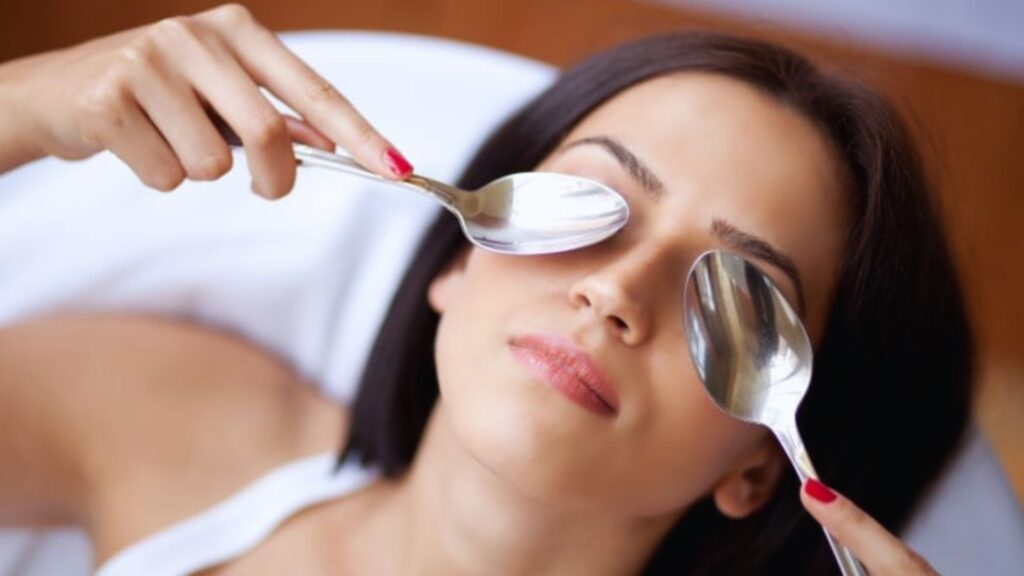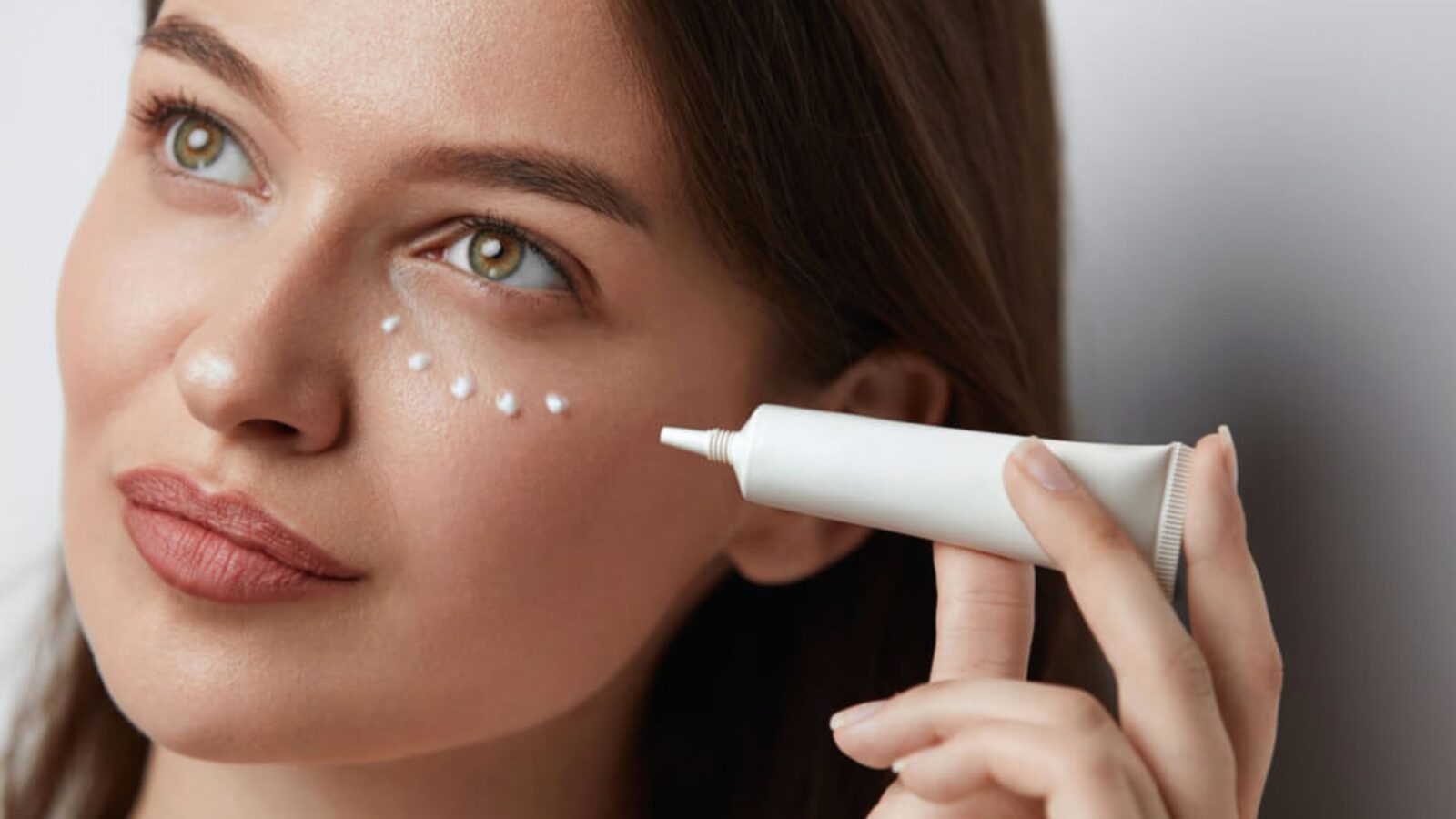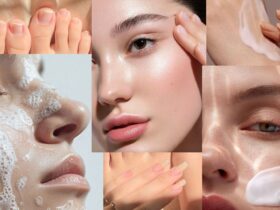Eye bags can make us look tired, older, and even unhealthy. These pesky under-eye circles or puffiness can develop for a number of reasons, including stress, lack of sleep, genetics, dehydration, or unhealthy lifestyle habits. While expensive creams and treatments are available, you don’t need to break the bank to reduce the appearance of eye bags. Fortunately, there are easy, effective, and inexpensive home remedies to cure eye bags that can fit into any daily routine. In this blog, we’ll cover nine working tips to cure eye bags naturally at home.
1. Cold Compress
One of the simplest and most effective remedies for reducing puffiness around the eyes is a cold compress. The cold temperature constricts blood vessels, reduces swelling, and helps to reduce the appearance of eye bags.
How to Do It:
- Wrap ice cubes in a clean washcloth and gently press it against your eyes for about 10 minutes.
- Alternatively, you can use a chilled spoon, refrigerated tea bags, or even a bag of frozen peas for the same effect.
Why It Works: The cold temperature helps tighten the skin and reduces inflammation, which significantly minimizes puffiness and dark circles.
2. Cucumber Slices
Cucumber slices have been a popular remedy for eye bags and dark circles for decades, and for good reason. Cucumbers have natural astringent properties and are rich in water, which makes them an excellent choice for hydrating and soothing the skin.
How to Do It:
- Cut a chilled cucumber into thick slices.
- Place the slices over your closed eyes for 10-15 minutes.
Why It Works: The cold cucumber slices cool down the skin, reduce puffiness, and help diminish dark circles. Cucumbers also contain antioxidants that promote healthy skin.

3. Tea Bags
Both green and black tea contain tannins, which act as a natural astringent, and caffeine, which can shrink blood vessels and reduce fluid retention around the eyes.
How to Do It:
- Soak two tea bags (preferably black or green) in hot water for 3-5 minutes.
- Remove the tea bags and let them cool in the refrigerator for about 15-20 minutes.
- Place the cold tea bags on your closed eyelids for 10-15 minutes.
Why It Works: The caffeine in tea helps constrict blood vessels and reduce swelling, while the antioxidants found in tea help rejuvenate the skin under your eyes.
4. Adequate Hydration
Dehydration can cause the skin around the eyes to look saggy, puffy, and dull. Staying hydrated helps maintain skin elasticity and reduces the likelihood of fluid retention, which often contributes to under-eye puffiness.
How to Do It:
- Aim to drink at least 8 glasses (2 liters) of water a day to stay hydrated.
- Incorporate hydrating foods like watermelon, cucumbers, and citrus fruits into your diet.
Why It Works: Hydrated skin is healthier, more elastic, and less likely to exhibit puffiness or wrinkles. Water also flushes out toxins that could be contributing to fluid retention around the eyes.
5. Elevate Your Head While Sleeping
Gravity can cause fluid to accumulate under your eyes, making the puffiness more noticeable in the morning. Sleeping with your head slightly elevated can prevent fluid buildup.
How to Do It:
- Use an extra pillow to keep your head elevated while sleeping.
- Alternatively, raise the head of your bed slightly to help promote better fluid circulation.
Why It Works: Elevating your head reduces the buildup of fluid under your eyes, minimizing puffiness when you wake up.
6. Use an Eye Cream with Vitamin E and Aloe Vera
If you prefer using topical treatments, an eye cream or serum containing Vitamin E and Aloe Vera can be beneficial. Both ingredients are known for their healing and anti-inflammatory properties.
How to Do It:
- Gently apply a small amount of Vitamin E or Aloe Vera gel under your eyes before going to bed.
- Massage it into the skin using a circular motion for better absorption.
Why It Works: Vitamin E is a powerful antioxidant that protects and nourishes the skin, while Aloe Vera soothes and hydrates the skin, reducing puffiness and dark circles.
7. Get Enough Sleep
Lack of sleep is one of the most common causes of eye bags and dark circles. When we don’t get enough sleep, our blood vessels dilate, leading to dark circles and puffiness under the eyes.
How to Do It:
- Aim for 7-9 hours of quality sleep each night.
- Establish a bedtime routine to help you relax and fall asleep more easily.
Why It Works: Getting enough sleep helps your body repair and regenerate skin cells, reduces inflammation, and prevents the formation of dark circles and eye bags.

8. Reduce Salt Intake
Excess sodium in your diet can cause your body to retain water, which can lead to puffiness, especially around the eyes. Reducing your salt intake can help reduce eye bags over time.
How to Do It:
- Avoid processed and salty foods like chips, canned soups, and fast food.
- Opt for fresh foods with lower sodium content, and try to cook more meals at home to control the amount of salt you use.
Why It Works: Reducing your salt intake prevents water retention, which can minimize puffiness around the eyes.
9. Gently Massage the Area
Massaging the area around your eyes can improve blood circulation and help reduce puffiness. It can also help drain excess fluid that may have accumulated under your eyes.
How to Do It:
- Use your ring finger to gently tap and massage the area under your eyes in circular motions.
- Be careful not to apply too much pressure, as the skin around the eyes is delicate.
Why It Works: Massaging improves lymphatic drainage and boosts circulation, reducing the appearance of eye bags and preventing fluid buildup.
Bonus Tips for Preventing Eye Bags
- Avoid Allergens: Allergies can cause inflammation and puffiness around the eyes, so it’s important to avoid triggers. If you suffer from seasonal allergies, taking an antihistamine can help.
- Wear Sunscreen: Protecting your skin from the sun can prevent premature aging and dark circles under the eyes. Always apply sunscreen with at least SPF 30 under your eyes when you’re outside.
- Use a Silk Pillowcase: Cotton pillowcases can tug at your skin while you sleep, which may contribute to wrinkles and puffiness over time. A silk pillowcase is softer on your skin and can help reduce friction.
Conclusion
Eye bags don’t have to be a permanent part of your appearance. These nine home remedies can help you reduce puffiness, hydrate your skin, and improve the overall appearance of the delicate area around your eyes. The best part is that they’re easy to incorporate into your routine and require little effort. Try them out, and enjoy a refreshed, youthful look!





















Leave a Reply